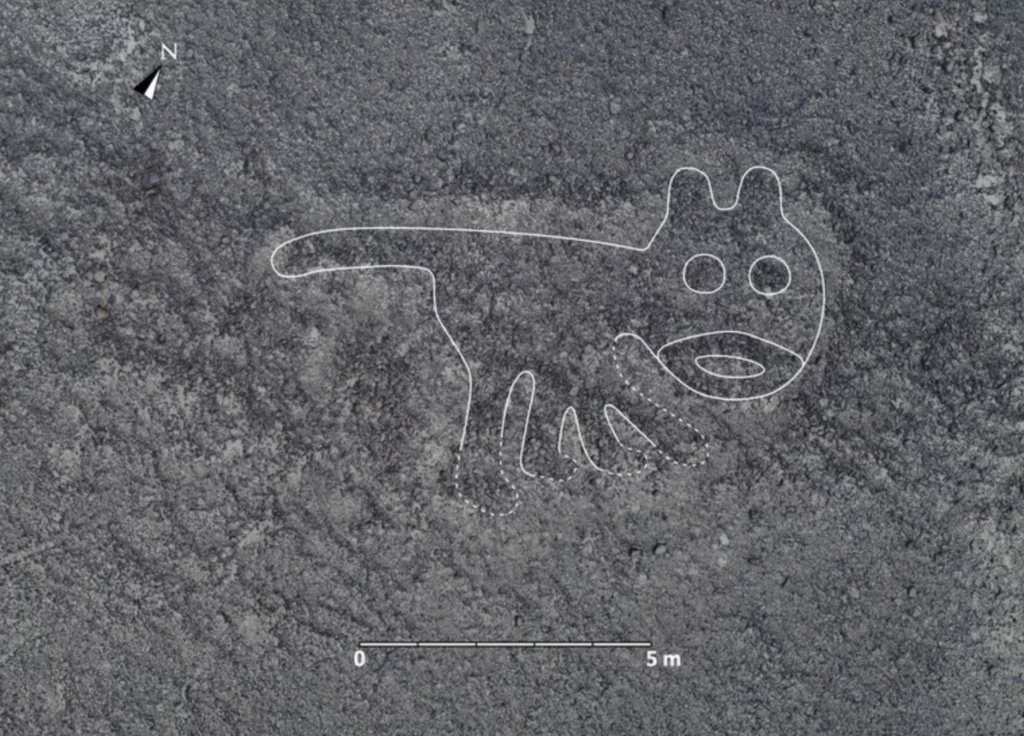
Created over 2,000 years ago, the Nazca lines are massive line drawings that appear, from a distance, to be carved into Earth’s surface on the arid land in southern Peru. They extend over an area of 500 square kilometers and were discovered in the 1920s. Now, a group of archaeologists found there are actually more lines than we thought.
The researchers from Peru and Japan discovered 168 previously unknown geoglyphs that Indigenous people created near the city of Nazca – including outlines of humans, birds, killer whales, felines, and snakes. It’s still unknown why they created this type of drawing, and why they did so many, but scientists hope the new findings will help to bring some light to the long mystery.
The glyphs date back to between 100 B.C. and A.D. 300 and were discovered during field surveys conducted between 2019 and 2020 by a team from Yamagata University in Japan working with local archaeologists from Peru. They used aerial photos and drones to discover the geoglyphs, according to a media statement.
“Adding the newly discovered 168 geoglyphs to the 190 geoglyphs discovered until 2018 results in a total of 358 geoglyphs,” the statement reads. “These geoglyphs were created by removing black stones from the surface of the earth to expose a white sandy surface below. There are two types of geoglyphs: a linear type and a relief type.”
The mystery of the Nazca lines
The newly discovered line drawings are, on average, between two and six meters in length and can be seen from the ground, but are much more spectacular when viewed from the air. However, some of the lines extend far longer, up to several kilometers long. Most depict animals, but some are weirder. In one of the newly found drawings, a headless human is seen holding what seems to be a stick or club while the head tumbles away.

Archaeologists don’t know the purpose of the Nazca lines, but there are several theories in place. Some researchers have suggested the lines’ purpose was related to water, a valuable commodity in the air lands of Peru. The geoglyphs weren’t used as a guide to finding water, but rather were part of a ritual to the gods to bring the needed rain. Another theory is that they served as a sort of celestial observatory, pointing towards various constellations or stars.
Now, the team from Peru and Japan is working on developing artificial intelligence that can detect geoglyphs by analyzing aerial images. While they didn’t use this to find the 168 geoglyphs, they hope to use the newly found drawing to “teach” the system to find more. They plan to continue searching the countryside for more of the depictions.
Researchers have discovered 190 figures in the area since 2004. But the vastness of the terrain they cover has complicated efforts to conserve the heritage site. In 2014, Greenpeace environmental activists entered the restricted area and placed a banner. In 2018, a truck driver drone over the site, damaging three of the geoglyphs.



